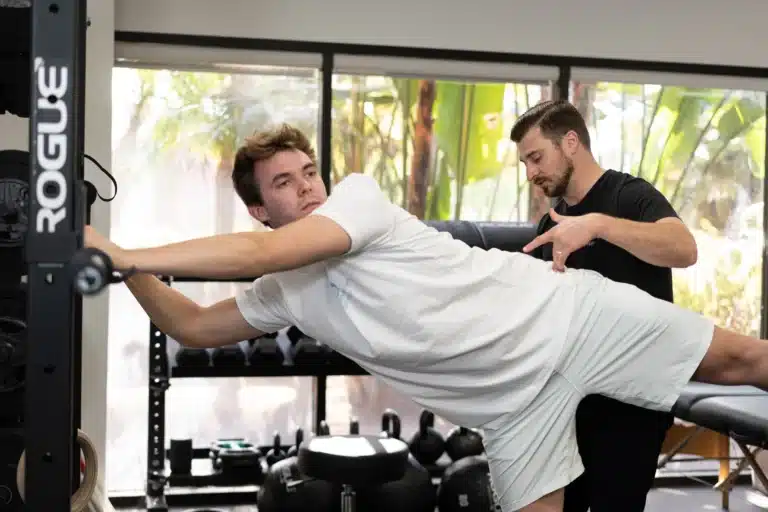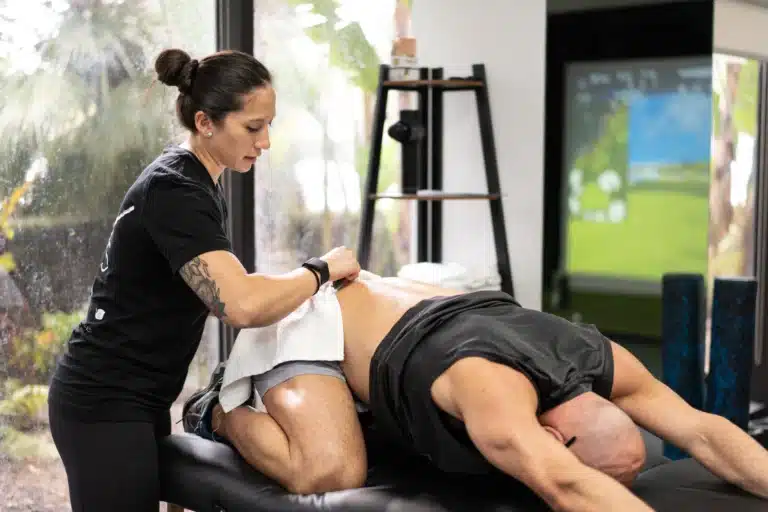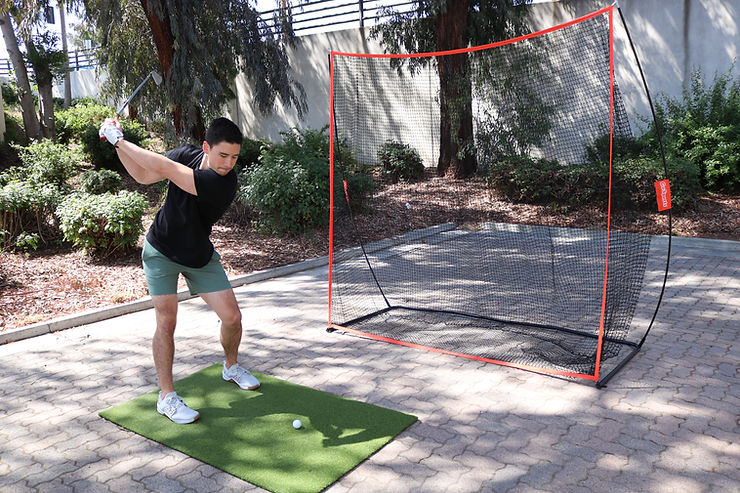Shin splints are a common running and sports injury that can be incredibly frustrating. The constant dull ache along the shinbone disrupts your training and leaves you wondering how to get back on track.
In this blog, we’ll discuss deep into this common injury, exploring the causes, symptoms, prevention strategies, and most importantly, the best stretches for shin splints and exercises for relief.
Common Causes of Shin Splints
Shin splints, also known as medial tibial stress syndrome, affect between 13.6% and 20% of runners and are a contributing factor in up to 60% of lower limb running injuries. This injury occurs when repeated stress irritates the muscles, tendons, and bone tissue along the shin bone. This irritation is often caused by:
- Sudden Increase in Training: Pushing your mileage or intensity too quickly can overwhelm your legs.
- Improper Footwear: Worn-out shoes or shoes that lack proper support contribute to shin splints.
- Running Form: Biomechanical inefficiencies, like overstriding or excessive heel striking, put unnecessary stress on the shins.
- Tight Calf Muscles: Inflexible calves limit ankle mobility and increase the risk of shin splints.
Symptoms of Shin Splints
The sign and symptoms of this injury is a dull, aching pain along the inner edge of your shinbone. This pain typically worsens during physical activity and might linger afterwards. Other symptoms can include:
- Tenderness to the touch
- Pain that increases with hills or uneven terrain
- Shin pain that gradually worsens over time
Preventing Shin Splints: How to Avoid Shin Splints When Running
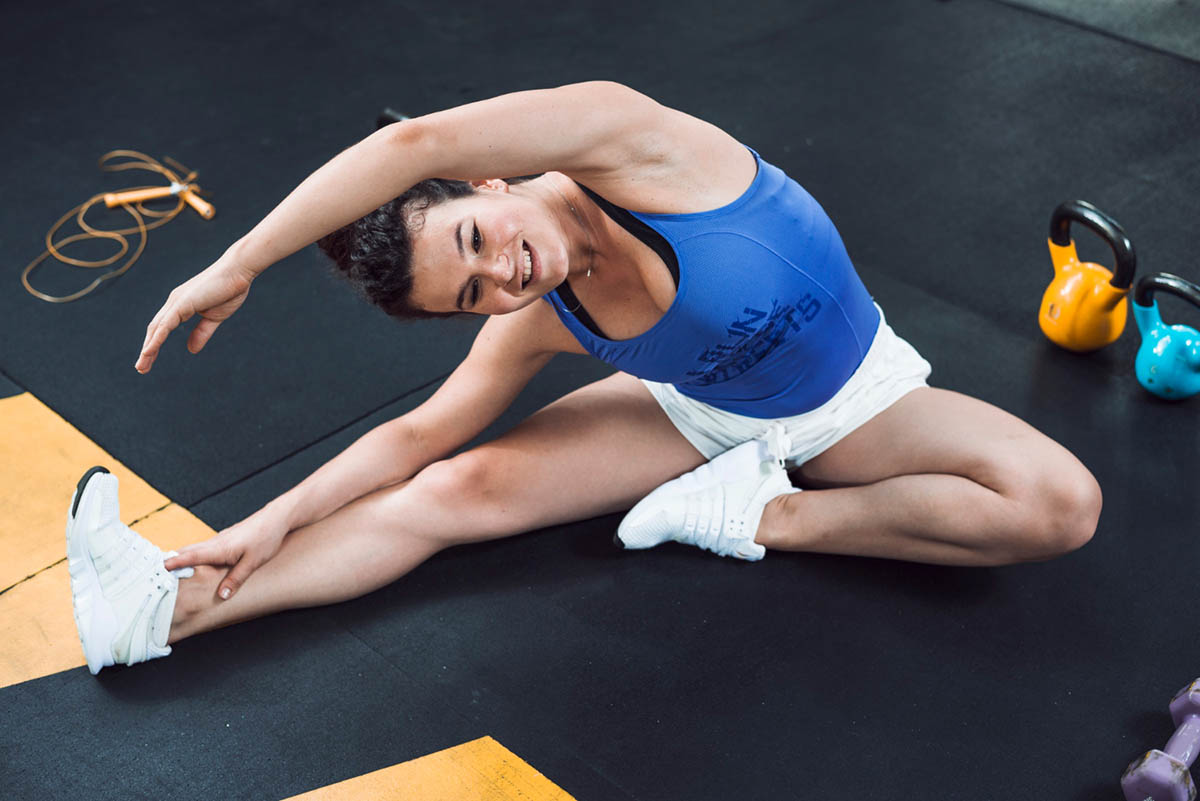
The good news is that shin splints are largely preventable! Here are some key strategies:
- Gradual Progression: Increase your running distance and intensity gradually, a 10% increase per week is a good rule of thumb.
- Invest in Proper Footwear: Choose running shoes or athletic shoes designed for your running style and replace them when worn out.
- Focus on Running Form: Short, quick strides with a midfoot strike can help reduce stress on your shins. Consider consulting a running coach or personal trainer for technique analysis.
- Stretch Regularly: Incorporate shin splint stretches outlined below into your pre- and post-run routine.
- Strengthen Your Legs: Building strength in your calves, tibialis anterior, and core leg muscles improves stability and reduces strain on the shins (more on strengthening exercises later).
Stretches for Shin Splints
Stretching is important in relieving the pain of shin splints and preventing future occurrences. Here are some of the best stretches to target the muscles associated with this painful condition:
Hold each stretch for 30 seconds, repeating 2-3 times per leg.
Gastrocnemius Calf Stretch
This stretch targets the larger calf muscle, the gastrocnemius.
- Stand facing a wall with your hands shoulder-width apart for balance.
- Step one leg back with your feet flat on the floor.
- Keep your front knee slightly bent and your back leg straight.
- Lean into the wall until you feel a stretch in your back calf.
- Ensure your back heel remains flat throughout the stretch.
Soleus Calf Stretch
The soleus muscle lies deeper beneath the gastrocnemius.
- Similar to the gastrocnemius stretch, stand with your hands on a wall for balance.
- Step one leg back with both heels flat on the floor.
- Gently bend your front knee while keeping your back leg straight.
- Lean into the wall until you feel a stretch deep in your back calf.
Achilles Tendon Stretch
A tight Achilles tendon can contribute to shin splints.
- Sit on the floor with your legs extended in front of you.
- Loop a towel around the ball of one foot.
- Gently pull the towel towards you, keeping your leg straight until you feel a stretch in your Achilles tendon.
Tibialis Anterior Stretch
This stretch targets the muscle on the front of your shin.
- Stand with your feet hip-width apart.
- Step one leg back with your toes pointed inward.
- Lean forward, keeping your back heel flat until you feel a stretch along your front shin.
Strengthening Exercises
Stretching alone might not be enough to address shin splints. Strengthening the muscles around your shinbone is equally important. Here are two key shin splint exercises:
Perform 2-3 sets of 10-12 repetitions per exercise, 2-3 times per week.
Anterior Tibialis Strengthening
This exercise strengthens the tibialis anterior muscle, which supports the arch and helps prevent excessive inward rolling of the foot.
- Sit on a chair with a resistance band looped around the arch of one foot.
- Secure the other end of the band under the chair leg for stability.
- Slowly invert your foot, pulling your toes towards you as if trying to touch your shin with your big toe.
Gastroc-Soleus Muscle Strengthening
This exercise strengthens both the gastrocnemius and soleus muscles, improving overall calf strength.
- Find a sturdy step or platform.
- Stand with the balls of your feet on the edge of the step and your heels hanging off.
- Slowly lower yourself down until your heels are below the step, feeling a stretch in your calves.
- Push back up to the starting position using your calf muscles.
Therapeutic Approaches: Shin Splints Therapies
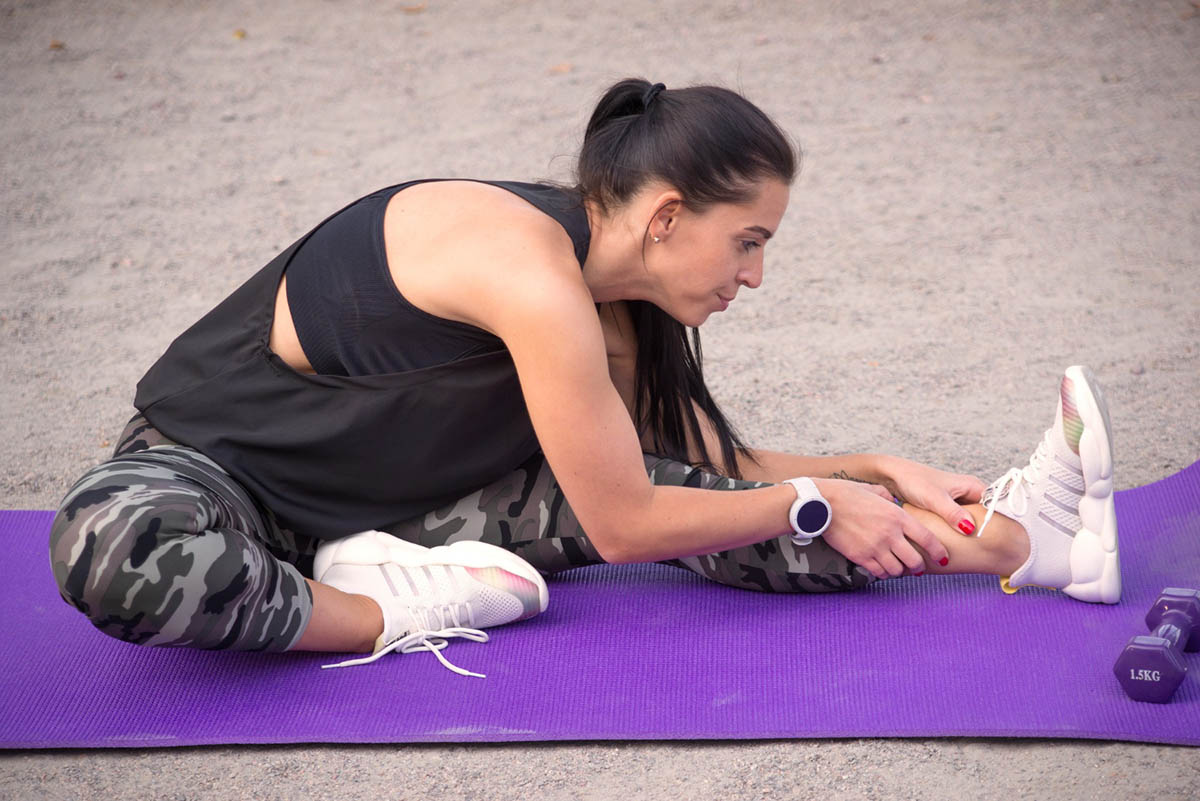
If shin splints persist despite implementing the above strategies, consider seeking professional guidance. Here are some therapeutic approaches that can accelerate healing:
Physical Therapy for Shin Splints
A physical therapist can assess your running form, identify biomechanical weaknesses, and create a personalized rehabilitation program. This program might include:
- Manual therapy: Techniques like massage and mobilization can help improve flexibility and reduce muscle tension.
- Specific exercises: Beyond the exercises mentioned above, a physical therapist can prescribe targeted exercises to address your particular needs.
- Taping: Kinesio taping can provide support and stability to the shin and ankle.
Use of Modalities
Physical therapists may also utilize modalities such as:
- Ultrasound: Promotes healing by increasing blood flow to the injured area.
- Electrical stimulation: This can help reduce pain and muscle inflammation.
- Ice therapy: Applied post-run, ice can reduce inflammation and pain.
How The Movement Schopp Can Help
Here at The Movement Schopp, we are passionate about helping runners overcome injuries and achieve their full potential. We offer a comprehensive approach to shin splints, including:
- Sports-Specific Rehabilitation: Our physical therapists have extensive experience working with runners and understand the unique demands of the sport.
- Injury Prevention Strategies: We’ll not only address your current condition or injury but also identify underlying risk factors and create a plan to prevent future occurrences.
- Advanced Therapeutic Techniques: In addition to the approaches mentioned above, we may utilize advanced physical therapy for runners to accelerate healing.
Conclusion
Shin splints can be a frustrating setback, but with the right approach, you can overcome them and get back on track to achieving your running goals. Remember, prevention is key! Implement the stretches, strengthening exercises, and running form tips outlined above.
If this injury does occur, don’t hesitate to seek professional help from physical therapy. They can assess your condition, develop a personalized treatment plan, and help you get back to pain-free running as quickly and safely as possible.
FAQs
Can stretching get rid of shin splints?
Stretching can be a valuable tool for relieving shin splint pain and preventing future occurrences. However, it might not be enough on its own, especially for severe cases. Combining stretching with strengthening exercises and, if necessary, physical therapy is often the most effective approach.
Is it OK to push through shin splints?
Pushing through shin splints can worsen the injury and lead to a longer recovery time. Listen to your body! If you experience shin pain, take a break from high-impact activities such as running and focus on stretching, strengthening, and shin splint therapy. Seek professional guidance from a physical therapist if the pain persists.
Is it bad to rub shin splints?
Rubbing your shins might offer temporary relief, but it’s not a long-term solution and can even irritate the tissues further. Focus on applying ice packs and gentle massage techniques to reduce inflammation.


